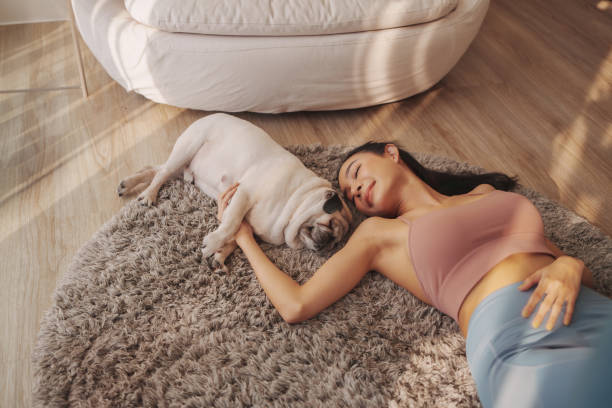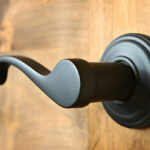Grooming your dog at home can be a rewarding experience for both you and your furry friend. It helps maintain their hygiene and strengthens the bond between you two. Regular grooming can prevent matting, reduce shedding, and keep your dog comfortable and healthy. This article will explore how to groom a dog at home, covering essential techniques and tips for a successful grooming session.
Understanding Your Dog’s Coat Types
How to groom a Dog at home Before you dive into the grooming process, it’s crucial to understand your dog’s coat type. Dogs typically have different coat types, including short, long, curly, and wiry. Each type requires specific grooming techniques and tools. Short-haired dogs like Beagles or Boxers generally need less grooming than long-haired breeds like golden retrievers or Shih Tzus. Understanding your dog’s coat will help you choose the right tools and grooming routine.
The Importance of Regular Grooming
Regular grooming is essential for your dog’s overall health. It helps remove dirt, debris, and loose hair, reducing the risk of skin infections. Also, grooming can help you identify skin issues or abnormalities early on. Regular brushing also stimulates the skin and promotes healthy hair growth. Learning to groom a dog at home can ensure your pet remains clean and comfortable throughout the year.
Essential Grooming Tools

How to Groom a Dog at Home: Gathering Your Supplies
You’ll need the right tools to groom your dog effectively at home. Essential grooming supplies include brushes, combs, clippers, nail clippers, and shampoo. A slicker brush detains long hair, while a bristle brush works well for short-haired breeds. Investing in quality clippers will make the process smoother if your dog requires haircuts. Nail clippers and a good-quality dog shampoo are also crucial for a complete grooming session.
Additional Accessories
Depending on your dog’s grooming needs, consider using a grooming table, gloves, or a de-shedding tool. These accessories can help make the grooming process easier and more efficient. Ensure your chosen tools fit your dog’s size and coat type.
Preparing for the Grooming Session
How to Groom a Dog at Home: Setting the Scene
Creating a calm environment is essential for a successful grooming session. Choose a quiet area in your home where your dog feels comfortable. If your dog is anxious, consider playing soft music or using calming scents to ease their nerves. It’s also helpful to groom your dog on a non-slip surface to prevent accidents.
Bathing Your Dog
Bathing is a critical part of the grooming process. Before you start, brush your dog’s coat to remove tangles and mats. When washing your dog, use lukewarm water and a shampoo specifically designed for dogs. Avoid getting water in their ears, and rinse thoroughly to remove all shampoo residue. Once the bath is complete, dry your dog with a towel or a pet-friendly dryer, depending on their comfort level.
Brushing Techniques
How to Groom a Dog at Home: Effective Brushing
Brushing is a fundamental part of dog grooming that should be done regularly. For long-haired breeds, start by using a slicker brush to remove tangles and mats. A bristle brush will help remove loose hair and distribute natural oils for short-haired dogs. Always brush in the direction of hair growth, and be gentle to avoid hurting your pet. Pay special attention to areas prone to matting, such as behind the ears and under the legs.
Dealing with Mats
If you encounter mats during brushing, handling them carefully is crucial. Use a de-matting tool or scissors to gently cut through the mat, being cautious not to hurt your dog’s skin. Regular brushing can help prevent mats from forming, so make this a routine part of your grooming schedule.
Nail Care
How to Groom a Dog at Home: Nail Trimming

Nail trimming is often one of the more challenging aspects of grooming for pet owners. Trimming your dog’s nails is essential to prevent discomfort and potential injury. Use a high-quality nail clipper designed for dogs, and trim only the tip of the nail to avoid cutting into the quick, which can be painful. If unsure, consider consulting your veterinarian or a professional groomer for guidance.
Regular Nail Checks
In addition to trimming, regularly check your dog’s nails to ensure they’re not becoming too long. Ideally, your dog’s nails should be trimmed every 3-4 weeks, but this can vary depending on their activity level and nail growth rate.
Ear and Teeth Care
How to Groom a Dog at Home: Cleaning Ears
Ear care is another essential aspect of grooming. Regularly check your dog’s ears for dirt, wax buildup, or signs of infection. Use a gentle ear cleaner formulated for dogs and a cotton ball to clean the ears. Avoid using cotton swabs, which can push debris further into the ear canal.
Dental Hygiene
Dental health is often overlooked but crucial for your dog’s well-being. Regularly brushing your dog’s teeth with dog-friendly toothpaste can help prevent dental issues. You can also provide dental chews to help reduce plaque buildup. Aim to brush your dog’s teeth several times weekly for the best results.
Final Touches and Grooming Routine
How to Groom a Dog at Home: Finishing Up
After completing all grooming steps, give your dog a thorough inspection. Check for missed spots or tangles. Offer praise and treats throughout the grooming session to reinforce positive behavior.
Creating a Grooming Schedule
To effectively maintain your dog’s grooming needs, create a schedule outlining when to brush, bathe, and trim nails. Regular grooming will make the process smoother and more enjoyable for you and your dog.
Conclusion
Learning how to groom a dog at home can be a fulfilling experience that enhances your pet’s health and well-being. By understanding your dog’s coat type, using the right tools, and following a consistent grooming routine, you can ensure that your furry friend remains clean, comfortable, and happy. Regular grooming prevents health issues and strengthens the bond between you and your pet. With patience and practice, grooming can become a joyful part of your dog care routine.
FAQs
Q: How often should I groom my dog at home?
The frequency of grooming depends on your dog’s coat type and needs. Generally, long-haired breeds should be groomed several times a week, while short-haired breeds may only need grooming once weekly. Bathing can be done every month or as needed, based on your dog’s activity level and environment.
Q: What should I do if my dog is anxious during grooming?
If your dog shows anxiety during grooming, try to create a calm environment. Use soothing music or treats to help ease their nerves. You might also consider breaking the grooming session into shorter, more manageable segments and gradually building up their comfort with each session.







